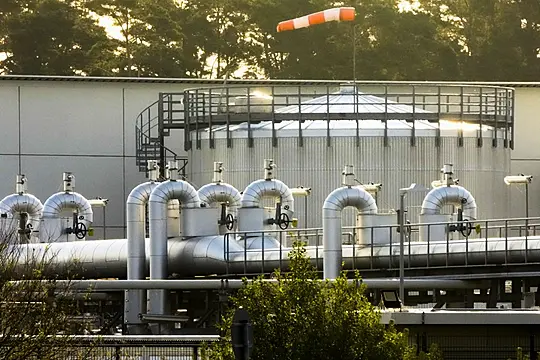The Nord Stream pipeline leaks pumping huge volumes of natural gas into the Baltic Sea could emit the equivalent of one third of Denmark’s total annual greenhouse gas emissions, a Danish official has warned.
Kristoffer Bottzauw, head of the Danish Energy Agency, said emissions from the three leaks on the Nord Stream 1 and 2 pipelines correspond to approximately 32% of annual Danish carbon dioxide emissions.
Danish emissions in 2020 were approximately 45 million tonnes of CO2.
Sabotage is suspected to have caused the leaks, and seismologists said on Tuesday that explosions rattled the Baltic Sea before they were discovered.

The incidents came as the EU struggles to keep a lid on soaring gas and electricity prices.
Mr Bottzauw told a press conference that his agency expects the gas to be out of the pipes, that run from Russia to Germany, by Sunday.
“We believe that half the gas is out by now of one of the two pipes,” Mr Bottzauw said.
“We are talking about a huge spill of several million cubic metres of gas.”
He said the gas is not poisonous but contains methane which is a potent greenhouse gas.
In a statement, his agency said its calculation on the greenhouse gas emissions was an estimate “partly because it is not certain that all the natural gas will be released into the atmosphere; partly because a methane proportion of the natural gas of 100% has been assumed”.
It added that the calculation was based on information from operators Nord Stream AG and Nord Stream 2 AG about the content of natural gas in the three pipelines that are leaking.
Some European officials and energy experts have said Russia is probably to blame since it directly benefits from higher energy prices and economic anxiety across Europe.
But others cautioned against pointing fingers until investigators are able to determine what happened.
“As long as there is gas, it is dangerous to be there,” Mr Bottzauw said, declining to say when experts would be able to go down and see the pipes, which he said were made of 12-centimetre (5in) thick steel coated with concrete.
They lie on the seabed between 70 and 90 metres (230ft and 295ft) deep.
The leaks were all in international waters.
Two are within the Danish exclusive economic zone while the third is in the Swedish equivalent.







